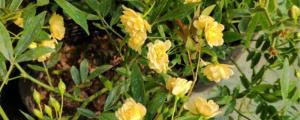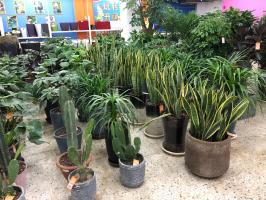What Kind of Plant is a Water Hyacinth?
The water hyacinth (Eichhornia crassipes) is a floating aquatic plant native to South America. It belongs to the family Pontederiaceae and is considered an invasive species in many parts of the world due to its rapid growth and ability to form thick mats on the surface of bodies of water.
Description
The water hyacinth has fleshy, bulbous stems that can grow up to 3 feet in length. Its leaves are large, ovate shaped and can reach up to 12 inches in length. The plant produces attractive lavender, blue or mauve flowers on spikes that tower above the foliage. Each flower has six petals and a yellow spot at the base. The water hyacinth is a free-floating plant, meaning that it is not anchored to the bottom of the water body but instead floats on top. Its root system is rather small and consists of feathery, thread-like roots that extend out into the water.
Habitat
The water hyacinth grows best in tropical and subtropical regions where the temperature is warm and the sun is abundant. It prefers still or slow-moving water and can thrive in ponds, lakes, rivers, canals, and wetlands. The plant can tolerate a wide range of water conditions but prefers slightly acidic to neutral water with a pH between 6.0 and 7.5. It can also tolerate water that has low levels of dissolved oxygen.
Uses
Despite being an invasive species, the water hyacinth has some useful applications. The plant can be used to purify water in polluted bodies of water by absorbing pollutants such as heavy metals, bacteria, and organic matter. It can also be used to treat sewage and wastewater. In some parts of the world, the water hyacinth is cultivated for its fibers, which are used to make paper, rope, and baskets. The plant is also an attractive addition to water gardens and can be used to create natural filtration systems in garden ponds.
Impact on the environment
The water hyacinth is considered a serious threat to the environment in many parts of the world. Its ability to grow and reproduce rapidly means that it can quickly take over bodies of water, covering the surface and blocking sunlight from reaching the underwater plants. This can cause a decline in the biodiversity of the ecosystem and can also affect fish populations. The water hyacinth can also cause problems for boats, affecting navigation and water transport, and can cause problems for hydroelectric power stations, clogging intake screens and reducing power generation.
Control
Controlling the spread of the water hyacinth is a challenging task due to its rapid growth and ability to reproduce quickly. Mechanical removal of the plant is labor-intensive and can be costly, and the use of herbicides can have negative impacts on the environment. Biological control, through the introduction of natural predators such as the weevil, has been successful in some places.
In conclusion
The water hyacinth is a visually appealing plant that has useful properties, such as water purification and the production of fibers. However, its status as an invasive species means that it has significant negative impacts on the environment and must be controlled. Understanding the biology and ecology of the water hyacinth is key to effectively managing its spread and minimizing its impact on ecosystems.

 how many times do yo...
how many times do yo... how many planted tre...
how many planted tre... how many pine trees ...
how many pine trees ... how many pecan trees...
how many pecan trees... how many plants comp...
how many plants comp... how many plants can ...
how many plants can ... how many plants and ...
how many plants and ... how many pepper plan...
how many pepper plan...





























